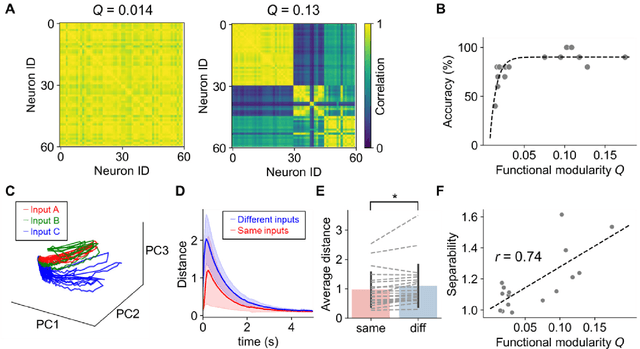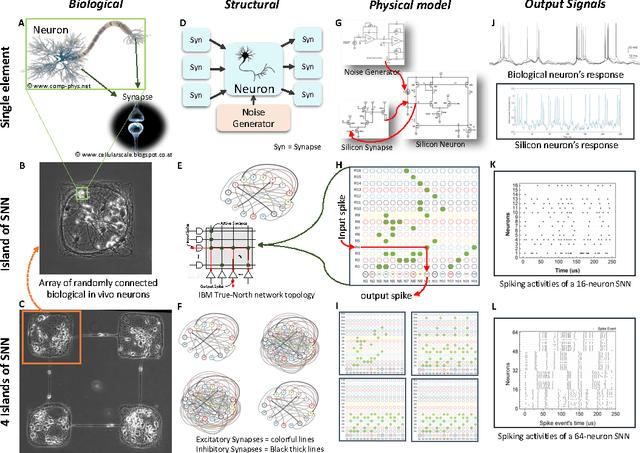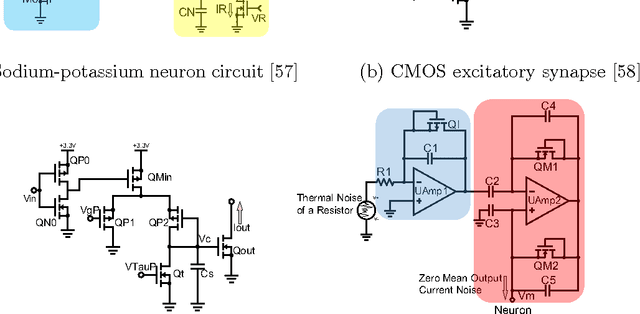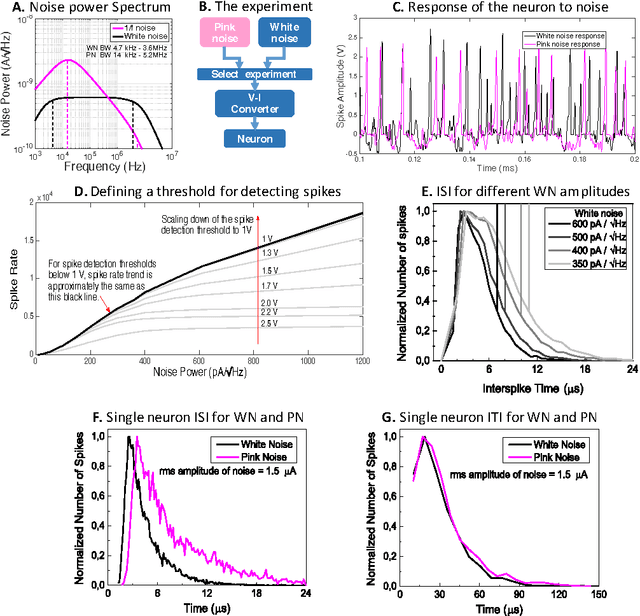Hideaki Yamamoto
Biological neurons act as generalization filters in reservoir computing
Oct 06, 2022



Abstract:Reservoir computing is a machine learning paradigm that transforms the transient dynamics of high-dimensional nonlinear systems for processing time-series data. Although reservoir computing was initially proposed to model information processing in the mammalian cortex, it remains unclear how the non-random network architecture, such as the modular architecture, in the cortex integrates with the biophysics of living neurons to characterize the function of biological neuronal networks (BNNs). Here, we used optogenetics and fluorescent calcium imaging to record the multicellular responses of cultured BNNs and employed the reservoir computing framework to decode their computational capabilities. Micropatterned substrates were used to embed the modular architecture in the BNNs. We first show that modular BNNs can be used to classify static input patterns with a linear decoder and that the modularity of the BNNs positively correlates with the classification accuracy. We then used a timer task to verify that BNNs possess a short-term memory of ~1 s and finally show that this property can be exploited for spoken digit classification. Interestingly, BNN-based reservoirs allow transfer learning, wherein a network trained on one dataset can be used to classify separate datasets of the same category. Such classification was not possible when the input patterns were directly decoded by a linear decoder, suggesting that BNNs act as a generalization filter to improve reservoir computing performance. Our findings pave the way toward a mechanistic understanding of information processing within BNNs and, simultaneously, build future expectations toward the realization of physical reservoir computing systems based on BNNs.
Control of the Correlation of Spontaneous Neuron Activity in Biological and Noise-activated CMOS Artificial Neural Microcircuits
Feb 24, 2017



Abstract:There are several indications that brain is organized not on a basis of individual unreliable neurons, but on a micro-circuital scale providing Lego blocks employed to create complex architectures. At such an intermediate scale, the firing activity in the microcircuits is governed by collective effects emerging by the background noise soliciting spontaneous firing, the degree of mutual connections between the neurons, and the topology of the connections. We compare spontaneous firing activity of small populations of neurons adhering to an engineered scaffold with simulations of biologically plausible CMOS artificial neuron populations whose spontaneous activity is ignited by tailored background noise. We provide a full set of flexible and low-power consuming silicon blocks including neurons, excitatory and inhibitory synapses, and both white and pink noise generators for spontaneous firing activation. We achieve a comparable degree of correlation of the firing activity of the biological neurons by controlling the kind and the number of connection among the silicon neurons. The correlation between groups of neurons, organized as a ring of four distinct populations connected by the equivalent of interneurons, is triggered more effectively by adding multiple synapses to the connections than increasing the number of independent point-to-point connections. The comparison between the biological and the artificial systems suggests that a considerable number of synapses is active also in biological populations adhering to engineered scaffolds.
 Add to Chrome
Add to Chrome Add to Firefox
Add to Firefox Add to Edge
Add to Edge